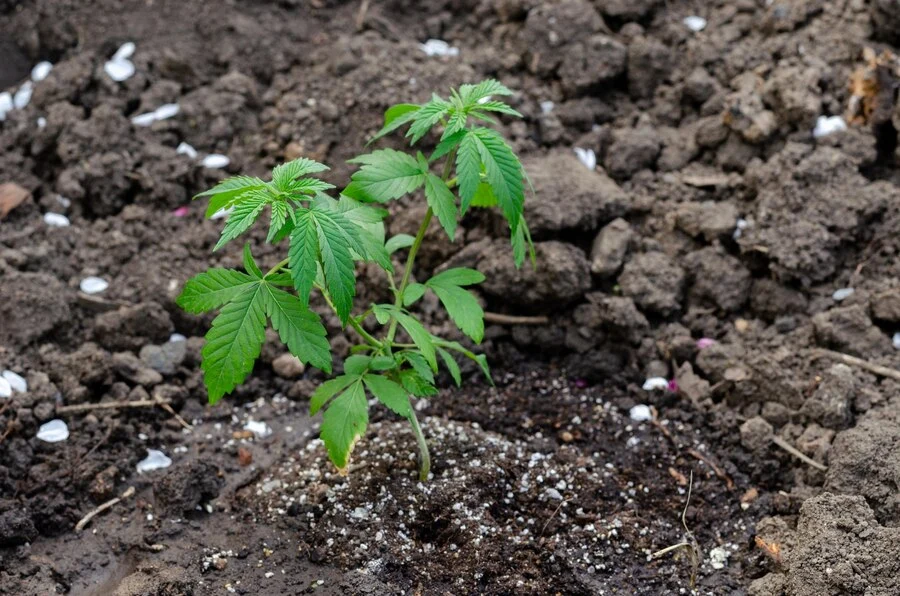Farmers, If you notice significant resistance to herbicide in your fields then it’s preferable to use a mechanical weed remover. Kelly Tillage has simplified mechanical weed control, making it one of the most effective strategies for weed management.
We’re here to help you learn how to deal with those stubborn weeds and make your farm smile with healthy crops. Your farm’s challenge is one we understand, and for that, we are here to lend a hand.
Why worry about the weeds in our presence, farmers? Team up with Kelly now, to get rid of these tough weeds in no time.
Herbicide Resistance in Weeds
Herbicide resistance refers to the genetic capability of a particular plant to withstand the effects of a herbicide application, which would otherwise be harmful to a typical population of the same species.
Herbicide resistance doesn’t mean the herbicide doesn’t work; in fact, resistant weeds can withstand even higher herbicide doses than what’s typically recommended.
What is Herbicide Resistance?
We need to talk about two important concepts when dealing with weeds: herbicide resistance and herbicide tolerance.
Herbicide Resistance
This happens when some individual weeds can survive a dose of herbicide that would normally kill the entire group. Think of it like certain weeds being “immune” to a specific weed killer.
Herbicide Tolerance
This is when an entire species of weeds can naturally survive and reproduce even when herbicides are used at their regular strength. No special immunity is involved; some weeds are just naturally good at handling herbicides.
Herbicide Resistance: The Growing Challenge
Australia currently has confirmed herbicide resistance in 47 weed species. Weeds are called “resistant” when they are killed by a weed killer (herbicide), but now they can survive it. Imagine the herbicide as a superhero power that used to defeat these weeds, but now it doesn’t work.
This resistance happens when we keep using the same weed-killer over and over again. It’s like the weed killer is a puzzle, and the more we use it, the more the weeds figure out how to solve it. So, they become “immune” to it.
Once a weed becomes resistant, it doesn’t change back. Even its children are born resistant. So, if we stop using that particular weed-killer, it won’t make a difference in the number of resistant weeds.
We can only reduce the total number of weeds, but the resistant ones stay strong and healthy, just like the others. Farmers can find peace of mind with the Kelly Tillage System, as we offer a highly sustainable solution. Our product line features exceptional disc harrows that effortlessly uproot and eliminate weeds, leaving them to die on the surface.
How do Weeds Develop Resistance to Herbicides?
The following are three main ways in which weeds become resistant:
Existing Resistance
In a bunch of weeds, there may be a few plants with a rare genetic change that helps them survive a specific weed-killing chemical.
This genetic change can affect how the plant deals with the chemical, making it better at handling it. So, when the weed-killer is used, the plants without this change die, but the ones with it live on.
Imagine there’s a type of weed that can’t be killed by a particular weed killer called glyphosate. At first, this weed might not be found in a certain area. But there’s a way it can show up there. It’s like when you accidentally bring some dirt into your house on your shoes.
In this case, the weed could be introduced to a new place in a few ways. It might come along with seeds used to grow crops. It could also hitch a ride on farming equipment or even on animals themselves.
This is especially important to keep in mind when dealing with types of resistance that aren’t very common, like glyphosate resistance.
Scattering of Weed Seeds
Weed seeds are like tiny plant babies, and they want to grow in new places, not right next to their plant parents. They have special ways to do this:
- Wind: Some seeds are so light that they can float in the air like little parachutes, and the wind can carry them to new places.
- Sticking to Animals: Other seeds have tiny hooks or spikes that can grab onto animals’ fur or feathers, like burrs. This allows the seeds to travel far because animals carry them around for a long time.
- Water: Some seeds can float on water, and they can go on a journey through rivers and streams to find new places to grow.
- Pollen: Pollen is like plant dust, and it helps make new seeds. It can be carried by the wind to reach other plants and help them make new seeds, but it doesn’t work well if it has to travel very far.
When weed seeds travel to new places using these methods, they might end up in places where farmers use herbicides to kill weeds.
When weed seeds land in places with herbicides, a few may survive because they have a special resistance to the chemicals. Over time, these survivors can become new plants with the same herbicide-resistant trait.
So, the way weed seeds move around and end up in herbicide-treated areas can play a big role in how weeds become resistant to herbicides. It’s like a little adventure for the seeds, and some of them come back as herbicide-resistant superheroes!
Mechanical Weed Control with Kelly Tillage System
Using herbicides for weed control isn’t the most environmentally friendly option. Chemical weed control can harm the environment, and it often fails to uproot unwanted plants, allowing them to resprout completely.
Farmers can face challenges confidently, knowing that for every hurdle, there’s a solution. In this case, Kelly discs step-in as the reliable solution, ensuring a worry-free approach.
These farm equipment do a great job of getting rid of deep-rooted stubborn weeds. Interested in a simple explanation of how they work? Keep reading!
Kelly Discs
Kelly discs are like superhero tools for farmers battling weeds! The CL2 Disc Chain, CL1 Disc Chain, and Spiked Disc Chain are our weed-fighting champions.
These Disc Chains not only pull out existing weeds but also gently scratch the surface, making weed seeds wake up and sprout. It’s like a wakeup call for the sleepy weed seeds.
Herbicide Resistance Test: The Seed & Quick Test
The herbicide resistance test is categorised into two distinct groups. Let’s explore both of them.
Seed Test
The Seed Test is conducted on samples of weed seeds usually collected during the harvest season, with the test results typically taking several months to become available.
Quick Test
The Quick Test involves analysing samples from weed plants collected within the crop, and it delivers results within a few weeks.
In the Quick Test, plant samples from the farm are used. These plants are brought to the lab, then planted into the pots, and then they are tested with herbicides.
The Seed Test, on the other hand, requires us to collect ripe seeds and grow them in the lab. Then these seedlings are tested to see how they respond to herbicides. Both tests are equally accurate in telling us which herbicides will be effective.
However, it’s important to note that the Quick Test cannot check for resistance to some pre-emergent herbicides, like trifluralin.
The benefit of the Quick Test is that it helps us quickly figure out which herbicides can still kill the weeds we have on the farm.
This information allows us to choose a different herbicide to use in the same growing season before the weeds produce seeds. This way, we can control the weeds and prevent them from spreading further.
Herbicide Resistance Test: Sample Collection
The following information is provided to guide you regarding the proper method of sample collection for both tests.
Sample Gathering for Seed Test
Gather seeds or seed heads from areas where you suspect the plants have survived the herbicide. Make sure to collect a few seeds from many different plants, not just a few, to get a representative sample.
If the resistance problem seems widespread, collect seeds in a W-shaped pattern across the field or affected area.
Sample Gathering for Quick Test
To collect plant samples for herbicide testing, it is recommended to gather 50-100 plants from the suspected area. The goal is to have about 20 plants per test. Carefully remove the plants from the ground and ensure that you shake off excess soil from their roots.
Wrap the collected plants in a couple of sheets of paper towel; however, it’s essential to be mindful not to use an excessive amount of paper towel, as this can cause small plants to dry out.
Avoid washing the plants. Instead, place the wrapped specimens in a waterproof plastic bag, such as a tightly sealed storage pouch.
When sending these samples for testing, try to post them at the beginning of the week to ensure they are received within that same week. Following these steps will help ensure the reliability of the plant samples for accurate herbicide testing.
Conclusion
Adopting Kelly Tillage enhances herbicide resistance management by disrupting weed cycles and reducing dependence on herbicides.
This integrated approach promotes sustainability and long-term effectiveness in weed control strategies in farming.


